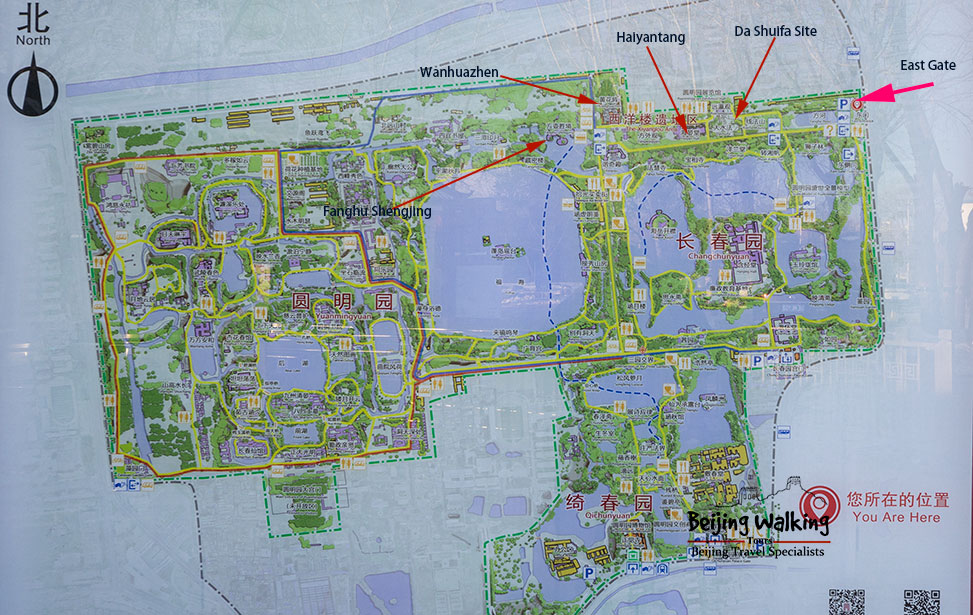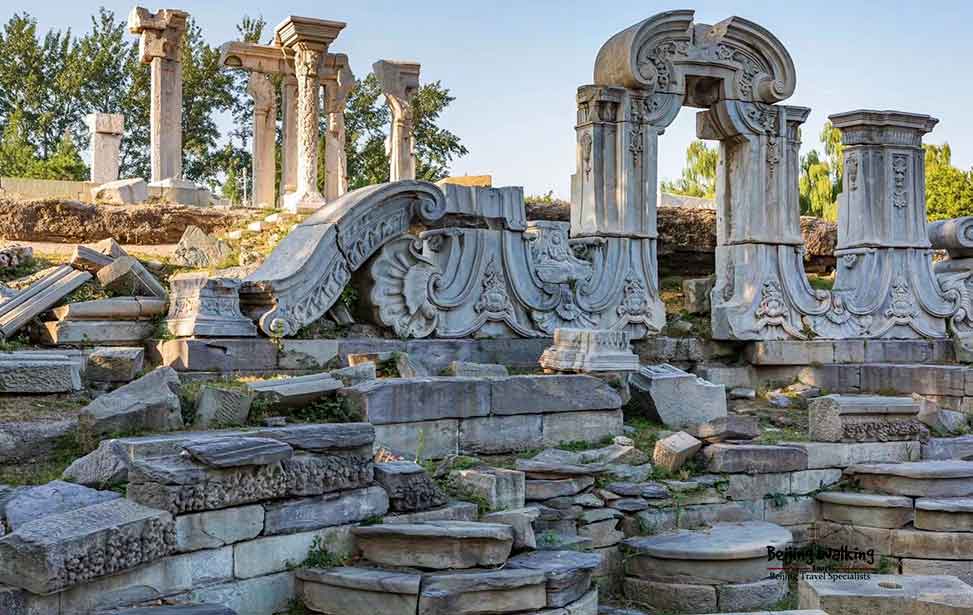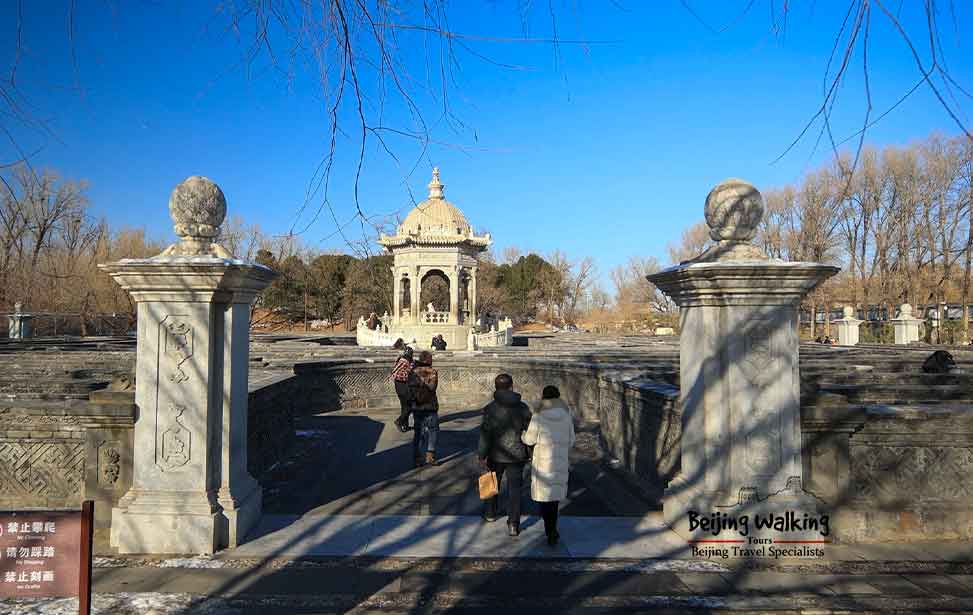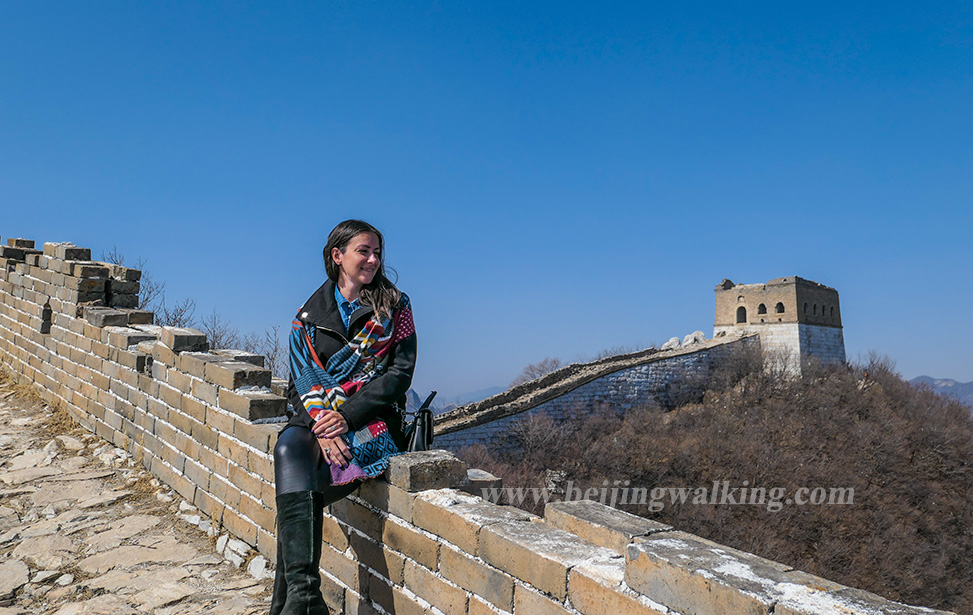From Royalty to Ruins: Beijing Old Summer Palace Travel Guide
The Old Summer Palace, also called Yuanmingyuan “圆明园” in Chinese, located in the Haidian District of Beijing, was a large imperial garden that the emperors of the Qing Dynasty operated for over 150 years. It was known as the “Garden of Gardens.” However, this former royal garden was burned down by the British and French forces in the mid-19th century, and what remains today are only the ruins. Nonetheless, it is still a precious treasure of Chinese history, culture, and garden art worth visiting and exploring. Here is a travel guide for Yuanmingyuan to help you better see this ancient garden.
Old Summer Palace Travel Logistics
Admission Ticket for the Main Entrance
Admission Ticket for Adults: RMB 10 yuan per person
Half-price Admission Ticket: RMB 5 yuan per person
Pass Ticket (Include: main gate, Dashuifa, the Exhibition Hall, and the Labyrinth)
Admission Ticket for Adults: RMB 25 yuan per person
Half-price Admission Ticket: RMB 10 yuan per person
Open Hours
From April to October, 7:00──19:00
From November to March, 7:00──17:30
How do you buy the tickets?
Use WeChat to search for “圆明园遗址公园,” or you can use your passport to buy the tickets at the tickets office.
How to get there?
Taxi:
圆明园南门 South gate of the Old Summer Palace
圆明园东门 East gate of the Old Summer Palace
Subway: Exit B, Yuanmingyuan Station, Subway Line 4
NOTE: If you go there by car, it is better to go to the east gate, as it is near the highlights.
Highlights in the old Summer Palace

Da Shuifa Site 大水法遗址

At its peak, it covered an area of over 5,200 acres with a circumference of over ten kilometers. After establishing the People’s Republic of China, the Old Summer Palace was listed as a critical national cultural heritage site. After years of restoration, the site has taken shape, and most of the mountain and water features have been restored, showcasing the picturesque scenery of the Jiangnan region with mountains and waters intertwined and misty rivers.
Fanghu Shengjing 方壶胜境

The design of this landscape is inspired by ancient mythology. The sparkling white jade steps are built along the water, and the magnificent palace stands on the water. When the thin mist rises on the water’s surface, it becomes dreamlike and resembles a fairyland. Emperor Qianlong transplanted the legendary Dragon Palace of the Eastern Sea to the Old Summer Palace. In Qianlong’s vision, whether it’s the mortal world or the fairyland, he should possess all the beauty and miracles.
Wanhuazhen 万花阵

Originally named Huanghua Zhen, it is a garden designed in the style of European mazes. It was built during the reign of Emperor Qianlong in the Qing Dynasty and combines Chinese and Western styles within the Old Summer Palace. Its main features include four-foot-tall carved brick walls with a white Western-style pavilion in the center.
Haiyantang 海晏堂

Haiyantang, a historical site in the Old Summer Palace, takes its name from the phrase “he qing hai yan, guo tai min an,” which means “the river is clear, the sea is calm, and the country is peaceful.” In Tang Dynasty poet Zheng Xi’s “Rizhong You Wang Zi Fu,” he wrote, “The river is clear, the sea is calm, and the time is harmonious and abundant.” The “he” refers to the Yellow River, and “yan” means calm.
Zhengda Guangmingdian 正大光明殿
Zhengda Guangmingdian, its name conveys a sense of openness and righteous dignity. This part of the architecture replicates the Taihe Dian (Hall of Supreme Harmony) in the Forbidden City. It served as both the location for imperial meetings and the venue for major celebrations.
Travel routes:
Route 1
It is a super big park; you can easily walk 3 hours or more inside. But to see the highlights, you only need about 1.5 hours. Follow this:
East Gate → Eastern Entrance of the Ruins → Dashuifa → Western Entrance of the Ruins → Fahui Temple → Zelan Hall → Panoramic Sand Table → Hanjing Hall → Exit through the Second Palace Gate 【Approximately 1.5 hours】
东门→遗址东口→西洋楼遗址→遗址西口→法慧寺→泽兰堂→全景沙盘→含经堂→二宫门出【约1.5小时】
Route 2
South Gate → Jianbi Pavilion (Cultural and Creative Area) → Hanqiu Hall → Xianren Chenglu → Sankong Bridge (Cultural and Creative Area) → Ginkgo Avenue → Site West Entrance → Western-style Building Ruins → Site East Entrance → Panoramic Sand Table → Lion Grove → East Gate Exit [Approximately 2 hours]
南门→鉴碧亭(文创)→涵秋馆→仙人承露→三孔桥(文创)→银杏大道→遗址西口→西洋楼遗址→遗址东口→全景沙盘→狮子林→东门出【约2小时】






